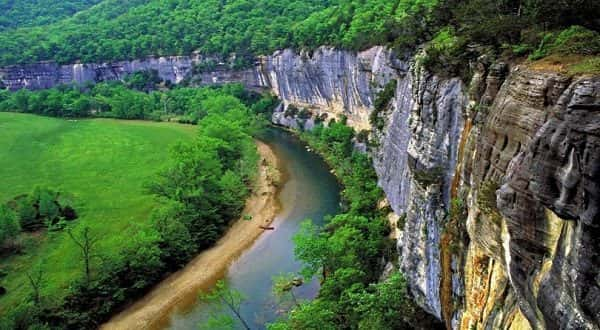
A local conservation project is among 48 across 29 states receiving funding to protect natural resources.
The USDA announced last week the Buffalo River Watershed Enhancement Project will receive almost $2.7 million through the agency’s Natural Resources Service (NRCS) for its Regional Conservation Partnership Program.
Overall, NRCS will award $206 million for the 48 projects, while leveraging nearly $300 million in partner contributions.
In a Facebook post Sunday, Second District Congressman French Hill says the grant will provide funding over five years to landowners in portions of the Buffalo River watershed (Calf Creek, Bear Creek, Lower Big Creek, Tomahawk Creek, Brush Creek) in Searcy County.
The Nature Conservancy is the lead partner on the project.
According to USDA, The Nature Conservancy, alongside a robust local partnership, including several state agencies and the University of Arkansas, aims to improve water quality by reducing sediment and nutrient loads through improving pasture management, reducing erosion from unpaved roads and restoring riparian corridors. The project area is home to a large number of historically underserved producers, whose participation will be prioritized.
Partner contributions to the grant total more than $2.7 million.
RCPP uses a partner-driven approach to fund innovative solutions to natural resource challenges. Through RCPP, NRCS and partners work together with private landowners and producers to implement a variety of conservation activities, including land management practices and systems, short-term land rentals, conservation easements and watershed structures. The mix of conservation activities carried out under each project is dependent on a project’s goals, objectives and conservation benefits.
USDA says the 48 projects offer impactful and measurable outcomes. They will support diverse agricultural and natural resource objectives, from helping farmers and ranchers improve water quality, soil health and drought resiliency to protecting drinking water supplies and enhancing wildlife habitat.
WebReadyTM Powered by WireReady® NSI










